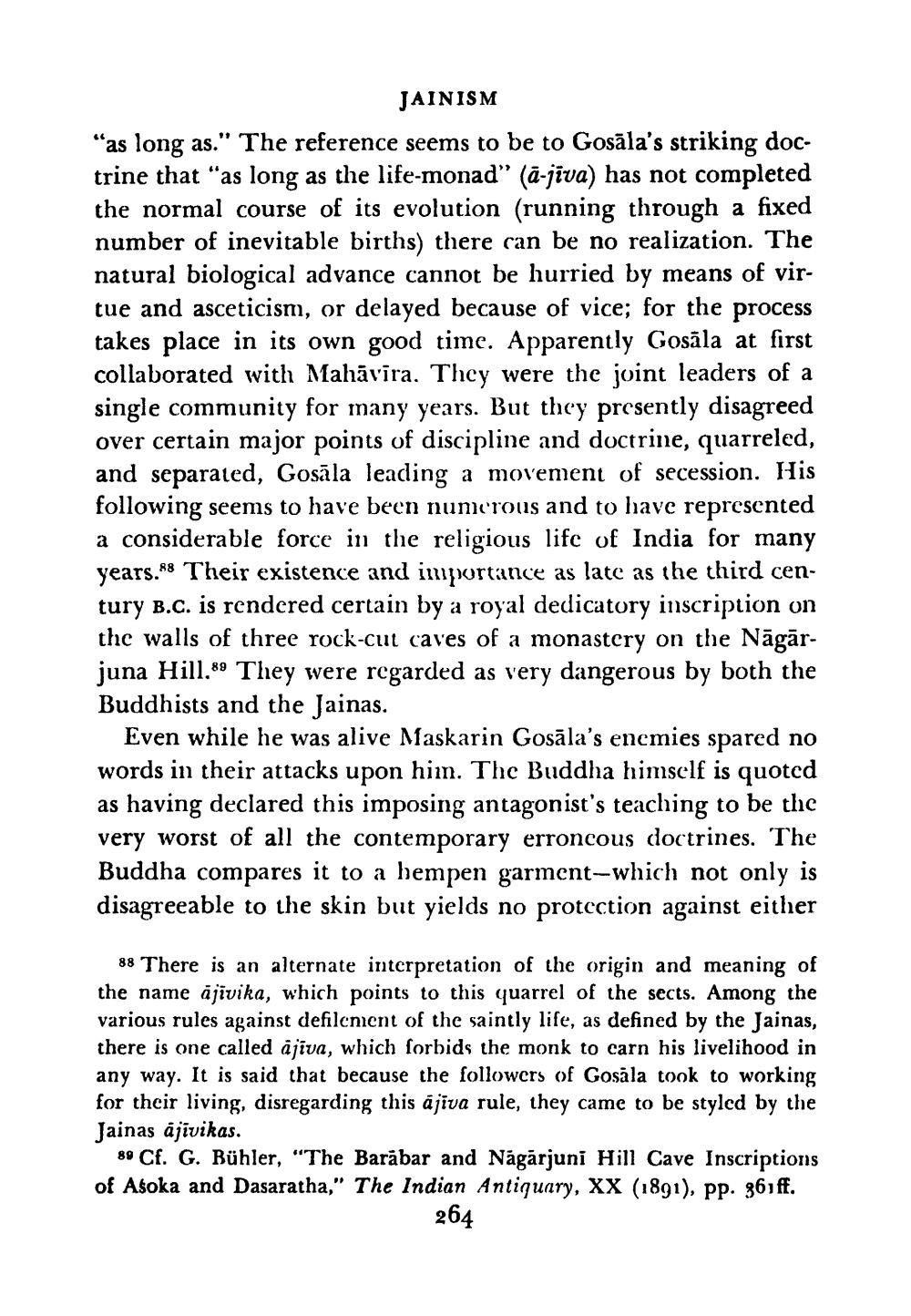________________
JAINISM
"as long as." The reference seems to be to Gosāla's striking doctrine that was long as the life-monad" (ā-jiva) has not completed the normal course of its evolution (running through a fixed number of inevitable births) there can be no realization. The natural biological advance cannot be hurried by means of virtue and asceticism, or delayed because of vice; for the process takes place in its own good time. Apparently Gosāla at first collaborated with Mahāvīra. They were the joint leaders of a single community for many years. But they presently disagreed over certain major points of discipline and doctrine, quarreled, and separated, Gosāla leading a movement of secession. His following seems to have been numerous and to have represented a considerable force in the religious life of India for many years.88 Their existence and importance as late as the third century B.C. is rendered certain by a royal dedicatory inscription on the walls of three rock-cut caves of a monastery on the Nāgārjuna Hill.89 They were regarded as very dangerous by both the Buddhists and the Jainas.
Even while he was alive Maskarin Gosāla's enemies spared no words in their attacks upon him. The Buddha himself is quoted as having declared this imposing antagonist's teaching to be the very worst of all the contemporary erroncous doctrines. The Buddha compares it to a hempen garment-which not only is disagreeable to the skin but yields no protection against either
88 There is an alternate interpretation of the origin and meaning of the name ajivika, which points to this quarrel of the sects. Among the various rules against defilenent of the saintly life, as defined by the Jainas, there is one called åjiva, which forbids the monk to carn his livelihood in any way. It is said that because the followers of Gosala took to working for their living, disregarding this äjiva rule, they came to be styled by the Jainas ajīvikas.
89 Cf. G. Bühler, "The Barabar and Nāgārjuni Hill Cave Inscriptions of Asoka and Dasaratha," The Indian Antiquary, XX (1891), pp. 361 ff.
264




